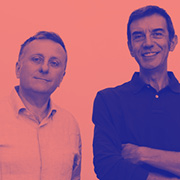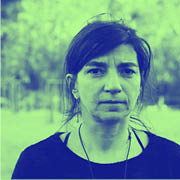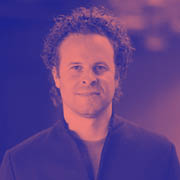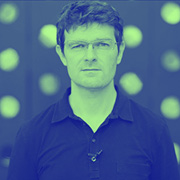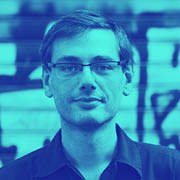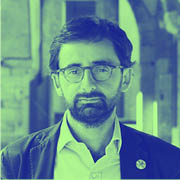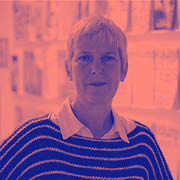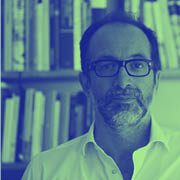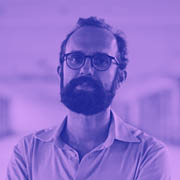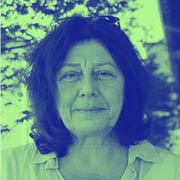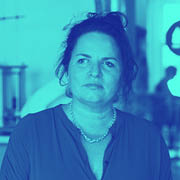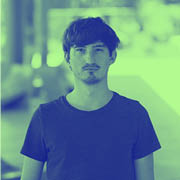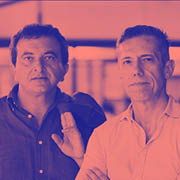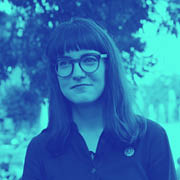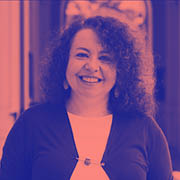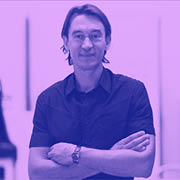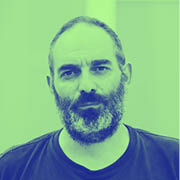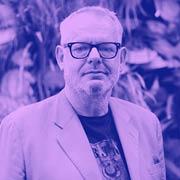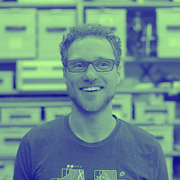PHILOSOPHER
TIZIANA VILLANI
Tiziana Villani is a philosopher, author and director of Eterotopia - a research laboratory which aims to ensure the publication of works spanning philosophy, urbanism, ecology, history and the social sciences. She teaches
'Phenomenology of contemporary art' at the New Academy of Fine Arts in Milan and has published numerous titles including ‘Ecologia Politica' (Political Ecology), Roma, Manifestolibri, 2013 and ‘Athena Cyborg’, Milano, Mimesis,1995.
TERMS
ecosophy
urban explosion
dematerialisation
public space
NEW ECOLOGIES
ECOSOPHY
I connect Ecosophy or political ecology, with the realm of new ecologies and the urban environment. The environmental issues and the theme of ecology that have dominated the urban discourse need a rethink that Félix Guattari’s Ecosophy suggests. We require an environmental, a social and a mental plan: three interdependent aspects that, in my opinion, allow us to reflect not on the traditional terms of ecology as green, landscape, nutrition, but instead put the environment - defined as the relationships between humans, land and things – at the centre of debate.
URBAN ASSETS
URBAN EXPLOSION
It is difficult to reflect on the transformations of the city, if we still can call it the city, without thinking about the fact that we are witnessing an unprecedented phenomenon. 2030 marks an urban revolution on a planetary scale: where all major continents will see the majority of humans living in urban contexts. I think that this urban explosion allows us to reflect on the fact that urban is not homogeneous; it is not only ‘the city’. These urban configurations are our present and our future, and they pose problems in terms of space, energy, viability, habitability, conditions of pollution and conditions of class colocation. These problems remain relevant as a response to the movement of urbanisation in areas that have already ‘exploded’ or that are about to explode.
DIGITAL TOOLKIT
DEMATERIALISATION
The term dematerialisation is borrowed from the intellectual, engineer and architect Paul Virilio. Who worked on the use of new technologies as a system of control of the city. The most interesting aspect in the reflections of Virilio is that he underlines how the virtual is a constant producer of our reality, just through different means, shapes and expressions. This allows us to avoid a dualism of the virtual and real. Forms of production of reality are connected, today more than ever, to the use of new technologies. The city designed with graphic design, imagined and produced within the spaces of social media and through the different technologies of information, is a real city, one that we live in and inhabit as much as the material conditions of living in a so called ‘real’ context. I would say that this dematerialisation crosses all fields: work, life, society and communication. The virtual is the means through which our representations of symbolic and imaginary realities are created nowadays.
NEW COLLECTIVES
PUBLIC SPACE
The theme New Collectives is very complicated as the fourth umbrella. However, I thought it would be good to continue reflecting on the difficult concept of public space in relation to new professions, the spaces of community that relate to them, and the public spaces that need redefining as they blur with the private. Spaces that relate to professional communities are absolutely transitory, because the urban professions and new industries that operate in these spaces are related to the dimension of communication, of creativity through expressions and media that rarely crystallize in a permanent form. This is a terrible condition because it requires us to always be up-to-date and innovative demanding new professions to follow never ending learning processes.
INTERVIEWED BY
GIANPIERO VENTURINI
Villani discusses the need to avoid a dualistic vocabulary, the shifting nature of public space and the notion of the peripheral as the location for forging new connections and relationships for the future city .
GV:
This project is about creating a New Vocabulary of Terms, what do you think defines contemporary vocabulary and is there something that should change about it?
TV:
The vocabulary is a pivotal necessity, because the new disciplines that proliferate tend to assume a narration-based attitude, reusing terms out of context that then lose their rigor, create confusion and become mere slogans. That is our way of communication today. Fragmented, fast communication is typical of social media and of our reality, and is a method of communication that often appropriates terms for a completely different context. This is not a positive thing and I believe that the creation of a vocabulary is a fundamental step to counter this. Language is what enables us to name and understand better phenomena and events. If we constantly blur and poeticize terms in our language, as often happens in the post-modern age, we risk losing concepts and knowledge. We live in an age in which the use of language is secondary and can be falsely intellectual, manifesting ignorance.
GV:
How is this reflected in the four terms you chose?
TV:
I chose terms that are strictly related with the research I have been working on for many years now. Starting from the discourse about environment that I have mentioned, dealing with Ecosophy, the urban, and the way we experience it socially. To approach the territory today means to delve into the discourse of urbanisation and to deal with a ‘côté’, a discourse that is strictly political. One of ecology, that cannot be reduced to a decorative exercise of restoring nature in the city, but would explore a notion of nature that has to do with new technologies. In my opinion, it is essential not to demonise new technologies but to keep in mind how they modify the production of reality.
Language is what enables us to name and understand better phenomena and events. If we constantly blur and poeticize terms in our language, as often happens in the post-modern age, we risk losing concepts and knowledge.
GV:
Do you recall any positive or negative experiences you had with vocabulary in communicating between disciplines - a moment when a word from a different discipline inspired you or when you discovered you were misunderstood because of lack of common understanding of terms used by specific disciplines?
TV:
Those are misunderstandings that, I have to say, I don’t welcome, in a polemic way. Particularly in regards to the term ecology, which is one of the most complicated misunderstandings we have. It is often necessary to go back, explain and be precise with our vocabulary, because behind these recurring and constant misunderstandings, lies the use of dualisms and dichotomies, typical of our late modern philosophical culture. The dichotomy of nature and culture is another example. There is a constant need to explain that there is no dualism to ecology. Confusion also rises between the terms information and communication. Communication is essential and should not to be confused with information. If one were a journalist rather than a sociologist, there is intent for divulgation, which can create confusion and a loss of criticality that can impact us in a less naive way than we would think. This way of confusing meanings is intentional, because ambiguity allows for stronger control on our forms of expression.
link
PUBLIC SPACE AND POLIS
‘Heterotopia and the City: Public Space in a Postcivil Society’
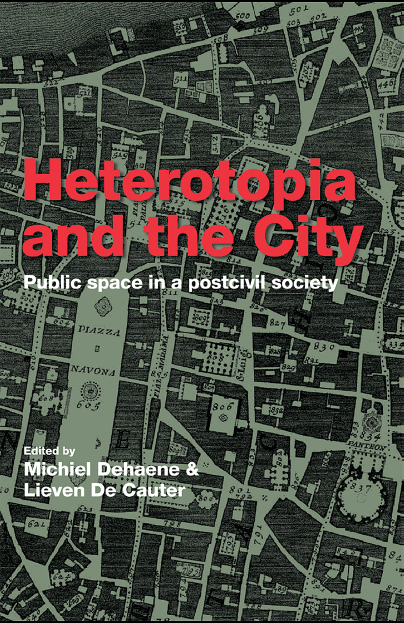

GV:
One of the concepts that we would like to discuss is that of public space. This concept perhaps best represents the idea of the ‘vocabulary of terms’ that we are working on. It is always present in the discourse, but with the passing of time it has changed its meanings. How do you see this evolution of meaning and what does it mean today?
TV:
It is a crucial topic, because public space is the space that, at least in a western urban context, arises from the concept of the ‘polis’. It is the space where the exercising of traditional power structures is suspended through the need to make collective decisions and face certain events with the community. With the passing of time, it is clear that with the change of urban structures, the concept of public space has also changed, architecturally, politically and from the point of view of governance. It has also fundamentally influenced that ‘evil’ term: participation. Public space today is a space of cancellation and elimination. We see it in historical public places which are currently experiencing rapid gentrification. For instance, the railway station could be conceived as an emblem of public space, but the current evolution of the station is moving towards commodification as a mall or retail centre, where public space is being eroded and aimed at consumption. In this sense, we can no longer distinguish between the production of spaces by public and private entities; the aim of the public is currently less to provide structures for sharing, but more to provide spaces of consumption.
article
TIZIANA VILLANI
'metamorfosi dell'urbano'
in Millepiani Urban, 2009, iss.1
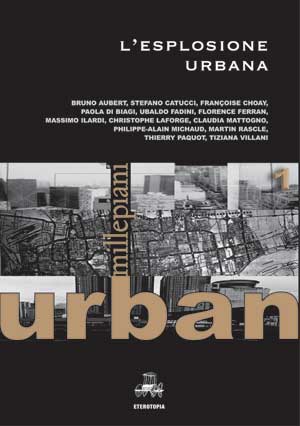

GV:
In your article ‘metamorfosi dell’urbano’, you explore the notions of periphery and marginal, pointing out that the growth of the periphery contributes to the urban fabric. Quoting your words: “In the periphery the production of new economies, scarce public interventions, the interstitial survival and the latest technologies coexist side by side.” Are these the urgent territories we need to address? Can you elaborate on your idea of the periphery and the marginal?
TV:
If we consider the city as a habitat, the concept of dwelling is currently peripheral. The remainder of the city is devoted to places of consumption and leisure. Guy Debord, as member of the Situationist movement, indicated the difference between spaces for leisure and spaces for living. Today we should consider the periphery as the real places of inhabitation. Peripheries are the city, and re-thinking the periphery, not as place of exclusion, but as the most vibrant places of contemporary living, prompts the re-activation of the urban fabric. An urban fabric that is not marginal, even though the periphery is often wrongly regarded as such. The most interesting experiments – urban, architectural, and social, belong to the periphery. The so-called city centre is a museum-like space with a skyline that aims at giving a certain, singular image of a city, whilst the inhabitation belongs to the periphery.
Today we should consider the periphery as the real places of inhabitation.
link
GUY DEBORD
‘Society of the Spectacle (film)’
TV:
The periphery is not a hierarchical space, where we can collocate in the city starting from a hypothetical centre, especially considering that many cities do not even have a recognisable centre as might be assumed in European urbanism. The periphery is where human living configures new relationships, forms of production and experiments of common action. To act on the peripheries means not only to redevelop them, but to put them in a relationship of connection, valuing the experiences that are produced. It means to avoid the narrative that has always defined the periphery as a place that is other than the centre of the city.
image
NAKED CITY
by Guy Debord, image courtesy of FRAC Centre, Orleans
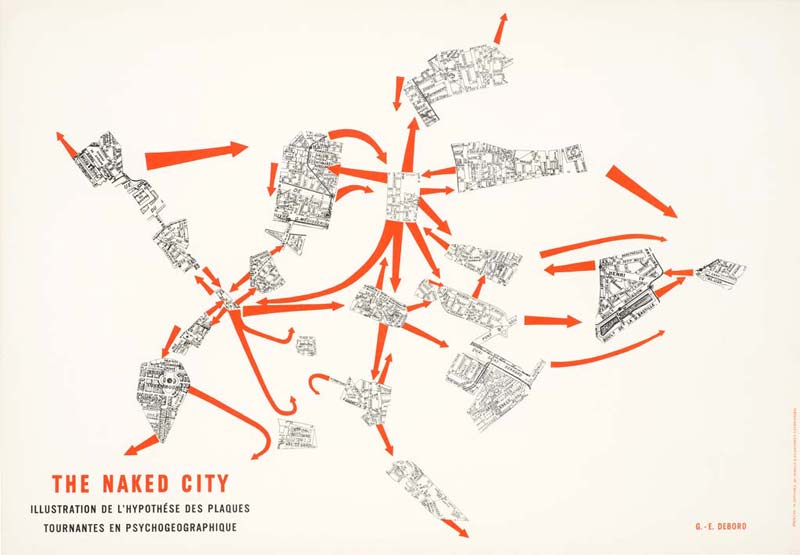

GV:
In our research the new professions play a key role in defining the topics we discussed, how do they shape the contemporary city?
TV:
In regard to new professions and new urban subjectivities, I think that we need to take into account that the city is a space of conflict, but not in a traditional sense. They are very fragmented conflicts that arise because of the continuous need to reinvent our relationships, our actions and ourselves. The manner in which we communicate often makes it a difficult challenge to trace spaces that can be shared. Communal spaces mean a harnessing of collective energies to create better living conditions. There is an extraordinary richness in these environments, which produce a different alienation in our present cities, where the boundary between professional and personal life is disappearing.
